This post was originally published December 15, 2020. It was updated on January 19, 2021, April 6, 2021, and 11/29/2023.
Google’s storage policy has left many scratching their heads. For consumers relying on Google’s free offerings, the threat to dump data raises fears. Let’s explore what their storage policy means for educators and what you can do as a free Gmail user.
Topics covered:
- What Google’s storage policy says
- Options for taking control of your data sprawl
- How to best back up and clean out Gmail, Drive, and Photos
- How to move email and files from one account to another
- What the new policy’s multi-tiered approach (Education Fundamentals/Standard, Teaching and Learning Upgrade, Education Plus) means for educators
Ok, ready to get started? Let’s go.
What Google’s Storage Policy Says: For Consumers
The Google Storage policy governs storage of Google Photos, Google Drive, and Gmail. Remember, Google Drive includes Docs, Sheets, Slides, Drawings, Forms, Jamboard, and Sites. You have one huge storage bucket, but all these components have to fit inside of it. This policy affects the consumer, or free, version of Google tools. We’ll discuss education users in a moment.
Here’s are the facts as I understand them:
- If you are inactive (two years) or exceed storage limits, you will lose your data. This applies if you store data in Gmail, Drive, or Photos.
- To be inactive, this means you’re not logging into these services.
Break the rules, and you’re not completely out of luck. Google offers you emails, notifications, and the opportunity to save your content. But, if you are using the free storage option, you have only 15GB of space available.
Most important for Google, you can invest in their Google One storage plan. So, you CAN avoid the cataclysm of losing data.
Avoiding Data Loss for Consumer Google Accounts
If you started using Google Drive because of free cloud storage, you may find paying to expand storage limits problematic. If that’s your attitude, you may want to avoid the Google One storage that augments your storage space. I no longer pay $1.99 a month for my Google One expanded storage (120 GB). What are my savings? It’s a truism that data expands to fit the space available. I’m so glad I switched to an alternative. What alternatives are there for you?
Let’s explore some of the options possible.
Keep Data Storage Local
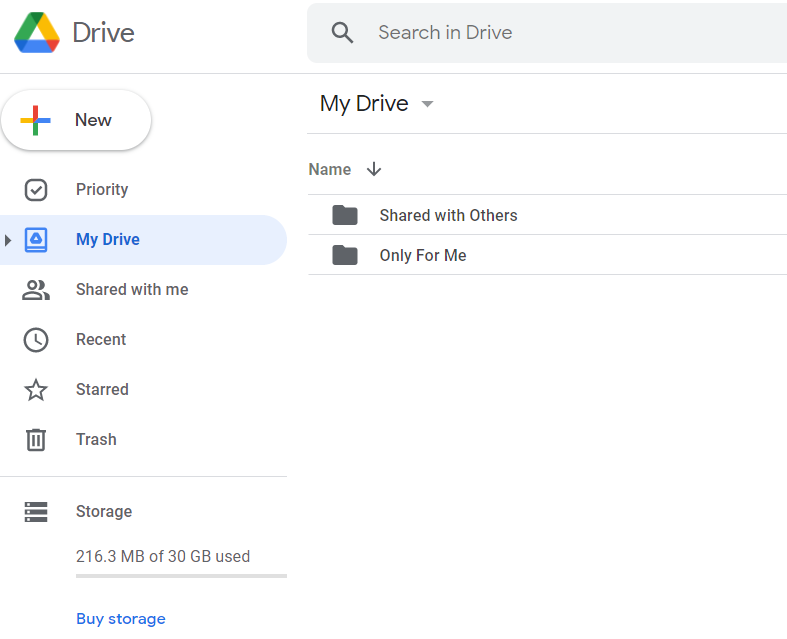
Suffering from data sprawl? You’re saving so much data, you can’t find the important stuff? You may need to take a slower approach that saves you money. Do this by keeping your data storage local.
To avoid recurring costs and keep your data local, follow these steps:
- Divide your Google Drive into items a Shared with Others folder, and an Only for Me folder. The criteria I use for the Shared with Others folders is anything that is being shared with others for collaboration or is embedded in a website. Google Sites, Forms, Jamboards, and collaborative docs fall into this category.
- Run the Google Drive Cleaner (learn more in this blog entry) to get rid of duplicate files. This step alone will save you space.
- Save the Only for Me folder and its contents to your computer.
- Get a USB external drive (2 terabytes is plenty. Remember, though, that old adage: “two is one, and one is none” so buy two. USB external drives last three to five years on average). You can use free tools to automate backups. One free automated backup solution is FileFreeSync. Or, take more control of them using tools like Free Commander (Mac alternatives).
- Put that Only for Me content on both drives. It won’t matter if you have a Chromebook or laptop/desktop with insufficient hard drive space. You will be able to save the contents straight to the external drive (albeit, it may be slightly slower to access).
Once you have a backup of the Only for Me folder on your external drive(s), remove them from Google Drive. This will yield LOTS of space back to you. Worried about recurring costs vs initial cost of an external USB drive and replacement? Consider the following chart and graph.

It’s based off the Google One storage plan and this external drive (although there are less expensive brands available).

See an Google Sheet with cost breakdown and check my math.
After cleaning out my Google Drive, following the process in this blog post, I found myself at 3.1GB of 120 GB of space. That’s enough to walk away from Google One Storage.
True Story: Wedding Photos and Video
My daughter married a few years ago. I had approximately 14GB of wedding videos and pictures stored in my Google Drive for safekeeping. My daughter already had her own offline copy. To get that Drive space back, I saved them to my external drives using the process above. Wow, 18GB recouped! This dropped my usage from 46.9 GB used to 29.2 GB used. Your target number is under 15 GB since that is what you get for free. About 14 more GB to shave off my total storage needs.
Ready to clean out your Google Photos? If you’ve been backing up your smartphone’s photos to Google Photos, you have tons of junk pictures. Junk can include memes, cat pictures, or 52 lousy versions of one beautiful snap. Dump the lousy, keep the best. You will regain gigabytes of space.
Did You Know?
You can get a big picture overview of your Google Drive with Clean Drive. It offers a seven day, free trial you can use to get a quick look at how your space is filled. You can use it to find and eliminate duplicate files, find old and/or hidden files that take up space. One of my favorite features is bulk delete. There are other ways to do this, but this may be a solution you want to invest in. In the meantime, be sure to read the rest of this blog entry to learn about other tools that can save you time and money.
Find Google Alternatives
Google has a reputation of letting some of its best products die. Having an exit policy isn’t a bad idea. If you’re going to end up paying, why not choose email, photo, and storage options you control? One big complaint about Google is that you are their product. That’s how they tailor advertisements to your needs and interests.
If you want to find alternative’s to Google’s ecosystem, ease into it. Start with your Google Drive files, then your Gmail and photos. Here are some alternatives I use:
Gmail Alternative: Get a Switzerland-based Proton Mail account. You can start out with a free account with 500MB storage, 150 messages per day. If you practice Inbox Zero, this should work well for most. If you have thousands of Gmails and need to put them somewhere, then you will need ProtonMail Plus. If you want other alternatives, consider another secure alternative for email. You will probably have to pay to store files online. Make sure you’re storing essential files and not one bit or byte more.
True Story: Over 10,000 Gmails
As a result of an earlier blog post, a Canadian wrote me and asked, “Can I migrate my over 10K Gmails into ProtonMail?” I told him that’s exactly what I had done using the ProtonMail Plus Import-Export app.
With PM Plus ($60 per year), you get 1,000 messages per day, labels, filters, and 5GB storage. What’s more, you can import your Gmail messages into PM Plus. I love the fact I can send encrypted emails, which comes in handy. I use that a few times a year for confidential bank/medical emails. Does this mean I got rid of my Gmail account? Goodness, no. I still give it out as my primary email address to catch spammers and others. I rely on my PM Plus account for family, banking, medical, and secure exchanges.
If Google were to suspend my email account, the loss wouldn’t be so great.
Drive Alternatives
Google Drive is unique in the quality of its collaboration options that you can pick from. Those aside, only put items you plan to share into your Shared with Others folder. These items include Google Sites, Google Docs (e.g. Slides, Sheets, Forms, Docs) that you will work together with others on, and/or Jamboard.
Working on a spreadsheet to calculate your expenses, use OnlyOffice or LibreOffice on your computer. Both are free for Mac/Windows/Linux and allows you to take advantage of your USB external drive for backup. You can even set up Portable Apps on your USB external drive so you always have access to the programs. Use Google Drive only for activities that need data collection or collaboration.
Cleaning Out Google Photos

Google Photos may be a monster with thousands of images to sort through. For some people, it may be easier for them pay the monthly fee for Google One storage. If that’s not you, then there are at least four steps I recommend to clean out Photos.
Cleaning out isn’t easy, but it’s doable. Be aware that you will have to deal with countless folders and images. Let’s review those four steps to clean out Photos.
Tip #1: Download and Organize
Manual movement of photos and videos can take a long time (days, weeks, years). Tools like Free Commander can make the job easier. Once cleaned up, you can use a no-cost, free, open source tool, DigiKam, to organize your photos. This provides better control of your photos than Google Photos online.
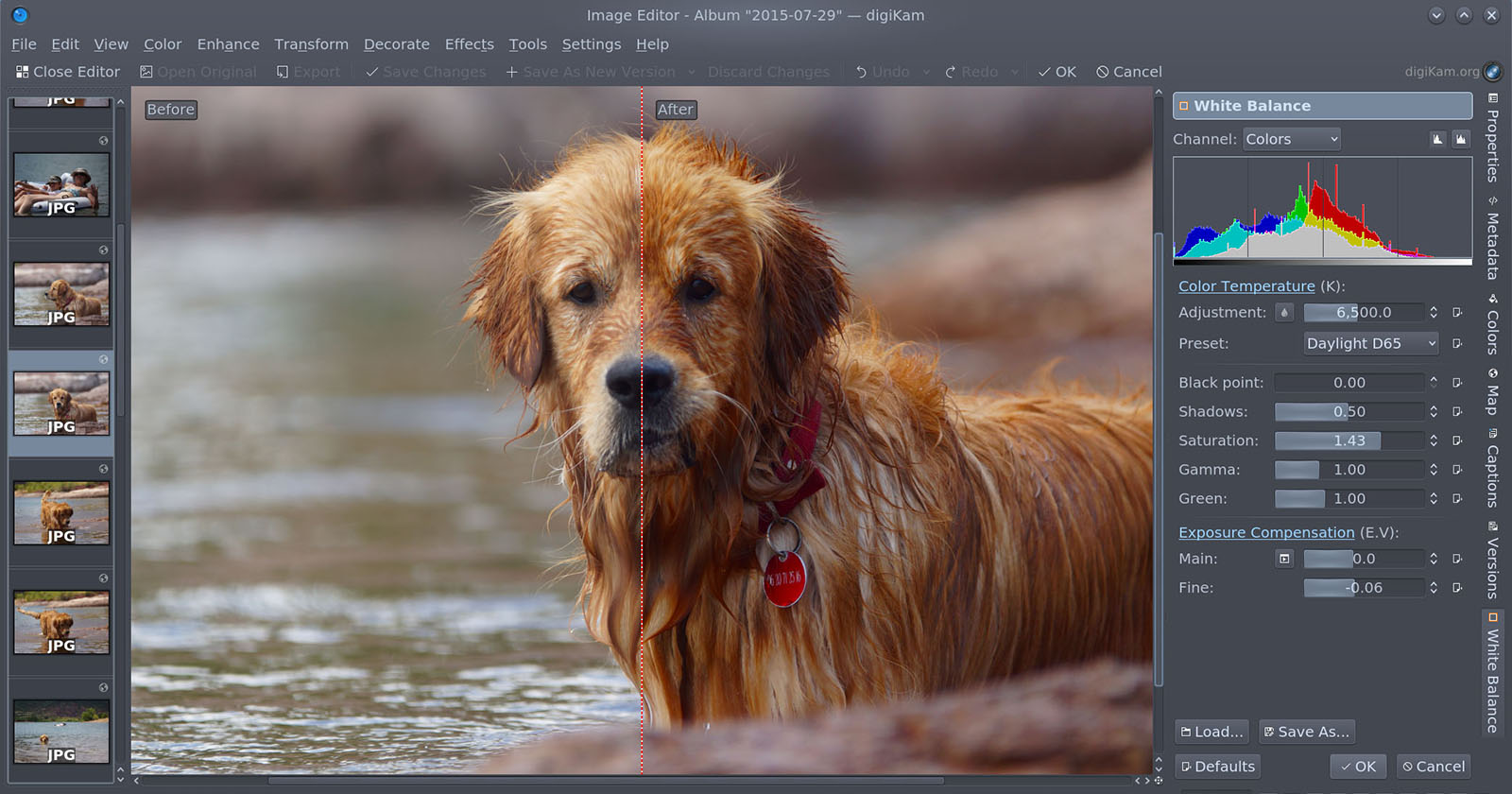
Tip #2: Remove Videos in Google Photos
To get more space back, remove videos stored in Google Photos. This is easy since you can type “video” in the Google Photos search bar, and you’ll get a list of videos. You can select them one at a time or by date and then use the MOVE TO TRASH option. When I cleaned out my Google Photos, I dropped 400 videos in the trash. That saved some space, I am sure.

It didn’t take too long to get rid of the videos shown above. Make sure to check and rid yourself of video space hogs.
Tip #3: Get Rid of “Unsupported Videos”
Go into the SETTINGS for Google Photos and manage “Unsupported Videos.” Trash those since Google can’t play them for you and they are just taking up space.
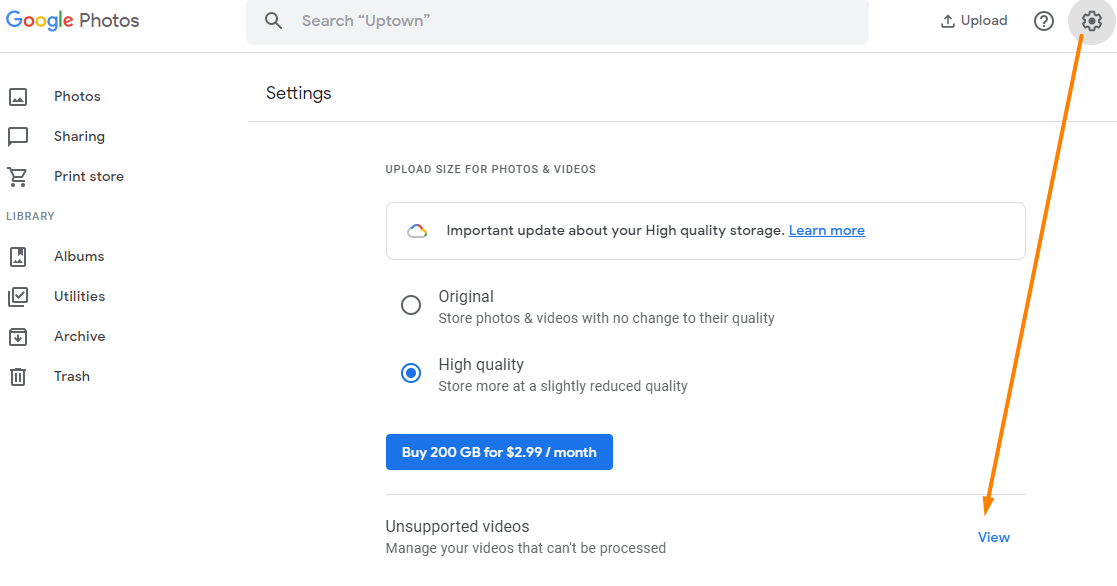
Tip #4: Archive Images
Images like screenshots, memes, etc. take up space. But you don’t need them since you can find them online. Be sure to use Google Photos’ Archive option to dump these pictures. In that way, you get rid of images that are automatically backed up from your smartphone. These are images that can include memes, cat pics, and more.

Tip #5 – Storage Manager
Think you got it all? One final way to double-check is to use Google’s Storage Manager. You’ll be able to clean out discarded items (such as deleted and spam emails) and Google Drive deleted files. You will also be able to see large items and remove those.
Whew, that was a lot of work. Ready to try some alternatives to Google products? Remember, this time, go lite. Only inlcude online items you need to share or collaborate with others.
Have Amazon Prime? Try Amazon Photos
One alternative to Google Photos is Dropbox. Others include SmugMug and Flickr. Remember, although you can back up every photo on your phone, you could also make another choice. That is, back up only those photos I want to share with others.
Wait, what if I want to back up my photos (cat pics included) off my phone? If you still want to do that, you can. Use an app that makes it easy to copy photos/videos from your smartphone. For iOS, use Readdle Documents. For Android, use WiFi File Transfer (shown below) to back up your photos to your computer. Both apps are available at no cost. What’s more, they force you to be more selective of the content you choose to back up.
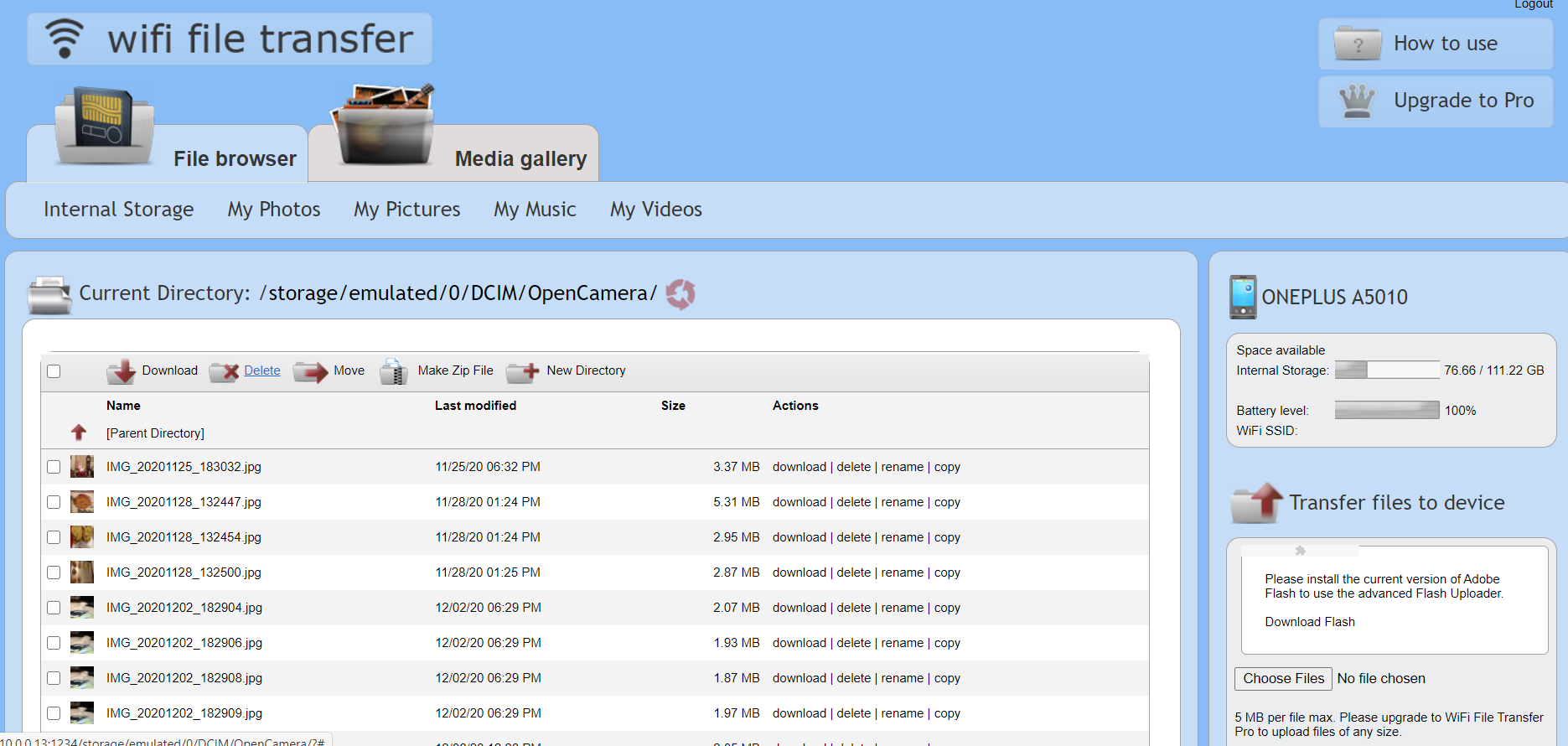
Split Your Usage Among Many Accounts
What some of my friends and colleagues have decided to do is split their usage among several Google accounts. That is, they use one Gmail account with 15GB of free space for personal/family. They use another for professional/work communications. This results in a lot of Google accounts to manage (Bitwarden.com makes it easy to manage multiple usernames and passwords), but it does have a positive effect. You aren’t putting all your eggs in one basket.
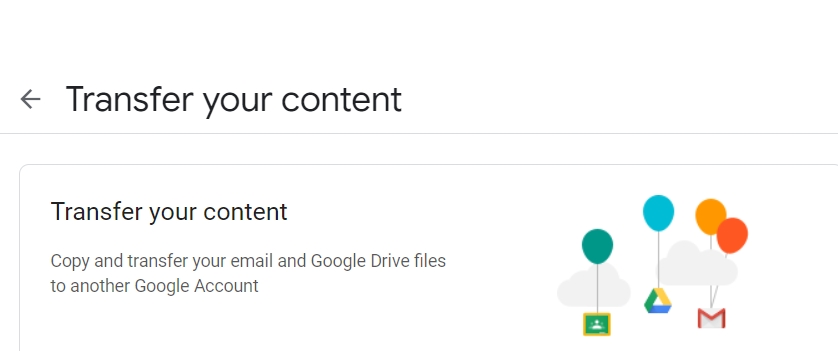
How do you move content that ends up in the wrong space? It’s easier than you might think. You can use Thunderbird email program to move emails from one Gmail account to another via IMAP, if you need to. Tools like CloudHQ, MultCloud, and Google Takeout make it easy to save or move stuff. That stuff can include Google Drive files or emails. And, with those tools, you can move content between them. If you are moving Gmails and Drive content from Google Workspace (f.k.a. G Suite EDU), then Google Takeout Transfer is a must-have tool.
Need to copy a folder or migrate your Drive only? You might try those solutions.

Image Source: Google’s Drive Storage FAQ for Admins
What Google’s New Storage Policy Means for Educators
Google’s new policy, going into effect July 2022, limits Google Workspace for Education users to a total of 100 terabytes of pooled storage. That means, if you have ten thousand students and three thousand staff, they will all share that 100 terabytes. This makes saving unlimited number of videos and content for free in Google Workspace for Education’s Drive storage a thing of the past. A few specific points from Google’s new policy for storage:
- Education Fundamentals and Education Standard editions offer pooled storage of 100 terabytes, although institutions with greater than 20,000 students, faculty/staff will be provided additional storage. The process for requesting more storage becomes available at the end of 2021.
- Your school district or organization can get additional storage through Education Plus and/or the Teaching and Learning Upgrade.
- With the Education Plus upgrade, you receive an additional 20 GB for each paid license on top of the 100 TB of pooled cloud storage shared by your organization (source).
- With the Teaching and Learning Upgrade, you get an additional 100 GB for each paid license in addition to the 100 TB of pooled cloud storage shared by your organization (source).
Worried that you will be running out of storage? You may want to get the Teaching and Learning Upgrade. One thing is for certain, teaching your faculty, staff and students how to manage their data has taken on some urgency. Share this blog entry to get them started.
Feature Image Source
Image adapted by author.

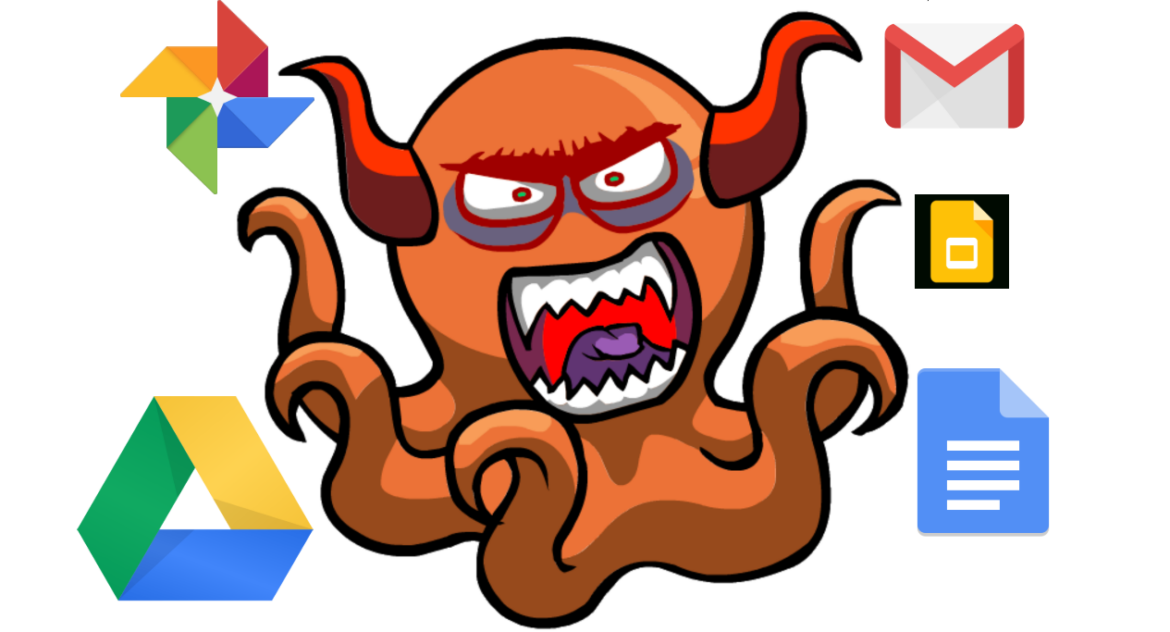
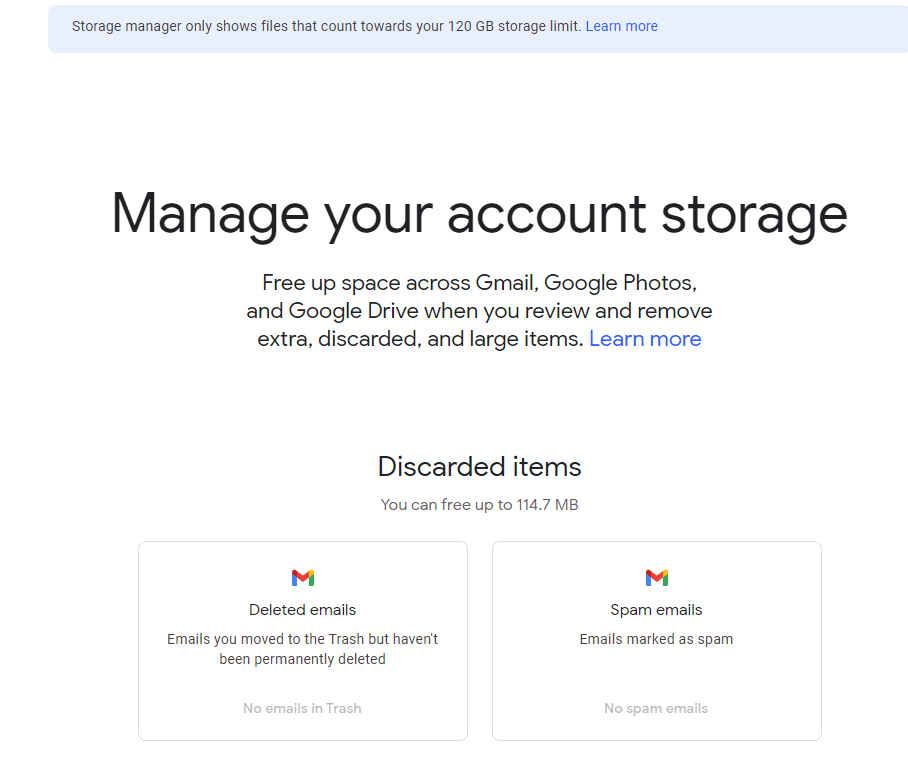
2 comments
FreeFileSynch was incredibly fast. It backed up 13GB of my files in less than 10 minutes to my external, USB hard drive. Thanks again for the great recommendation, Miguel!